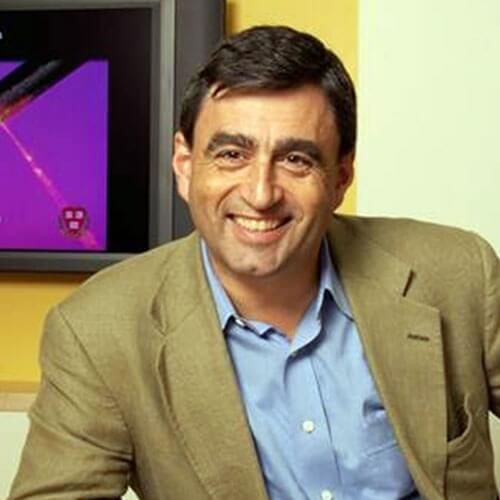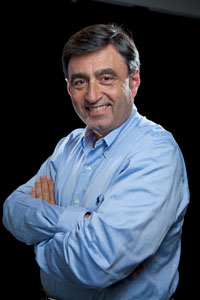News
Eric Mazur is the Balkanski Professor of Physics and Applied Physics at the Harvard School of Engineering and Applied Sciences.
Cambridge, Mass. – October 30, 2014 – Members of the Optical Society (OSA), a leading professional organization for those who study the science of light, have elected Harvard physicist Eric Mazur to serve as OSA vice president in 2015. He will serve one year as vice president, followed by one year as president-elect, president in 2017, and past-president in 2018.
Mazur is the Balkanski Professor of Physics and Applied Physics and Area Dean for Applied Physics at the Harvard School of Engineering and Applied Sciences (SEAS), where his research has advanced the science and technology of nanophotonics, and his passion for pedagogical innovation has earned him a following among educators worldwide.
"Eric’s contributions to optics and science education are internationally recognized," said Elizabeth A. Rogan, chief executive officer of OSA, in a statement. "His experience spans three key areas—academic research, science education, and industry. This expertise will be a valuable asset to the OSA Membership."
Mazur came to Harvard University in 1982 after obtaining his Ph.D. at the University of Leiden in the Netherlands. He joined the faculty in 1984 and received tenure six years later.
Mazur's research group at Harvard uses light as a tool to study ultrafast phenomena like molecular dynamics, phase transitions within semiconductors, and chemical reactions. With very short and intense laser bursts, his team can also modify the fundamental properties of materials, creating new platforms for applications like high-efficiency solar cells, advanced computing technologies, and optoelectronic devices.
I am convinced that better science education for all—not just science majors—is vital for continued scientific progress.
A highly regarded teacher, Mazur has dedicated much of his career to the improvement of classroom pedagogy. Since the early 1990s, he has promoted and perfected a teaching strategy, called the "flipped classroom," that he pioneered in his introductory physics course at Harvard. Put simply, the idea is that the teacher’s role is not to lecture from a book, but to challenge students with conceptual problems. Mazur’s 1997 book Peer Instruction: A User’s Manual, developed with the support of the National Science Foundation and the Pew Charitable Trust, has been translated into four languages, with over 26,000 copies distributed. Most recently, he wrote Principles and Practice of Physics, published in 2014, a textbook that presents a groundbreaking new approach to teaching introductory calculus-based physics. In May 2014, Mazur was named the first winner of the Minerva Prize for Advancements in Higher Education, recognizing his significant contributions to improving higher education.
"I am convinced that better science education for all—not just science majors—is vital for continued scientific progress," Mazur wrote in his OSA election statement.
Mazur has founded two companies—SiOnyx, which is commercializing black silicon, and Learning Catalytics, a company recently acquired by Pearson that uses data analytics to improve classroom learning. In addition, he is Chief Academic Advisor for Turning Technologies and serves on the Scientific Advisory Panel for Allied Minds, a pre-seed investment company that partners with universities to fund corporate spin-offs in early-stage technology companies.
Mazur said he was "honored" to have the opportunity to lead the OSA. He hopes "to help strengthen the link between academia and industry and to expand the OSA’s education and outreach effort, with the aim of inspiring future generations of researchers and innovators."
"We look forward to his leadership over the next four years," Rogan said.
About OSA
Founded in 1916, The Optical Society (OSA) is the leading professional organization for scientists, engineers, students and entrepreneurs who fuel discoveries, shape real-life applications and accelerate achievements in the science of light. Through world-renowned publications, meetings and membership initiatives, OSA provides quality research, inspired interactions and dedicated resources for its extensive global network of optics and photonics experts. OSA is a founding partner of the National Photonics Initiative and the 2015 International Year of Light. For more information, visit www.osa.org.
Topics: Optics / Photonics
Cutting-edge science delivered direct to your inbox.
Join the Harvard SEAS mailing list.
Scientist Profiles
Eric Mazur
Balkanski Professor of Physics and Applied Physics




